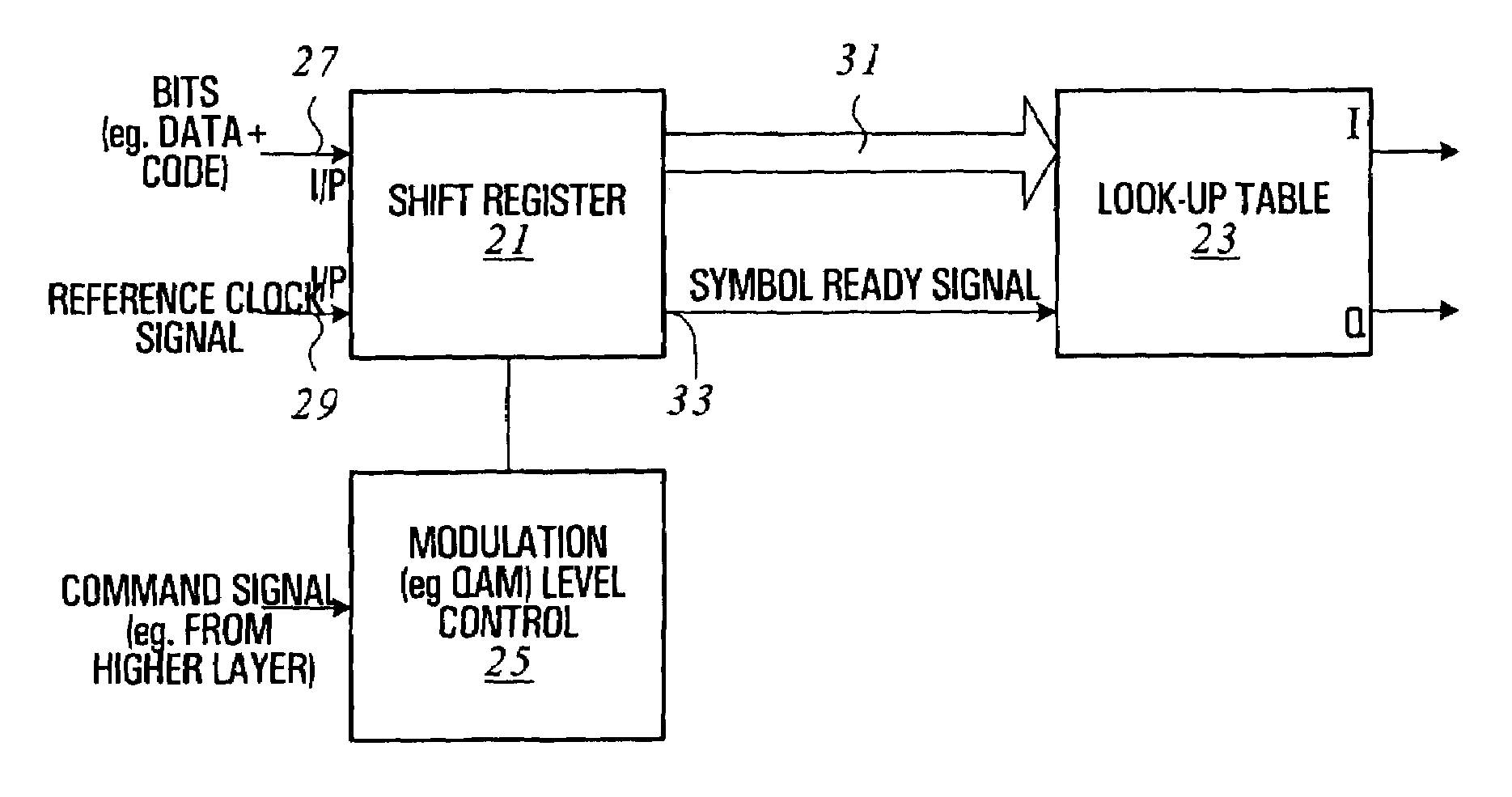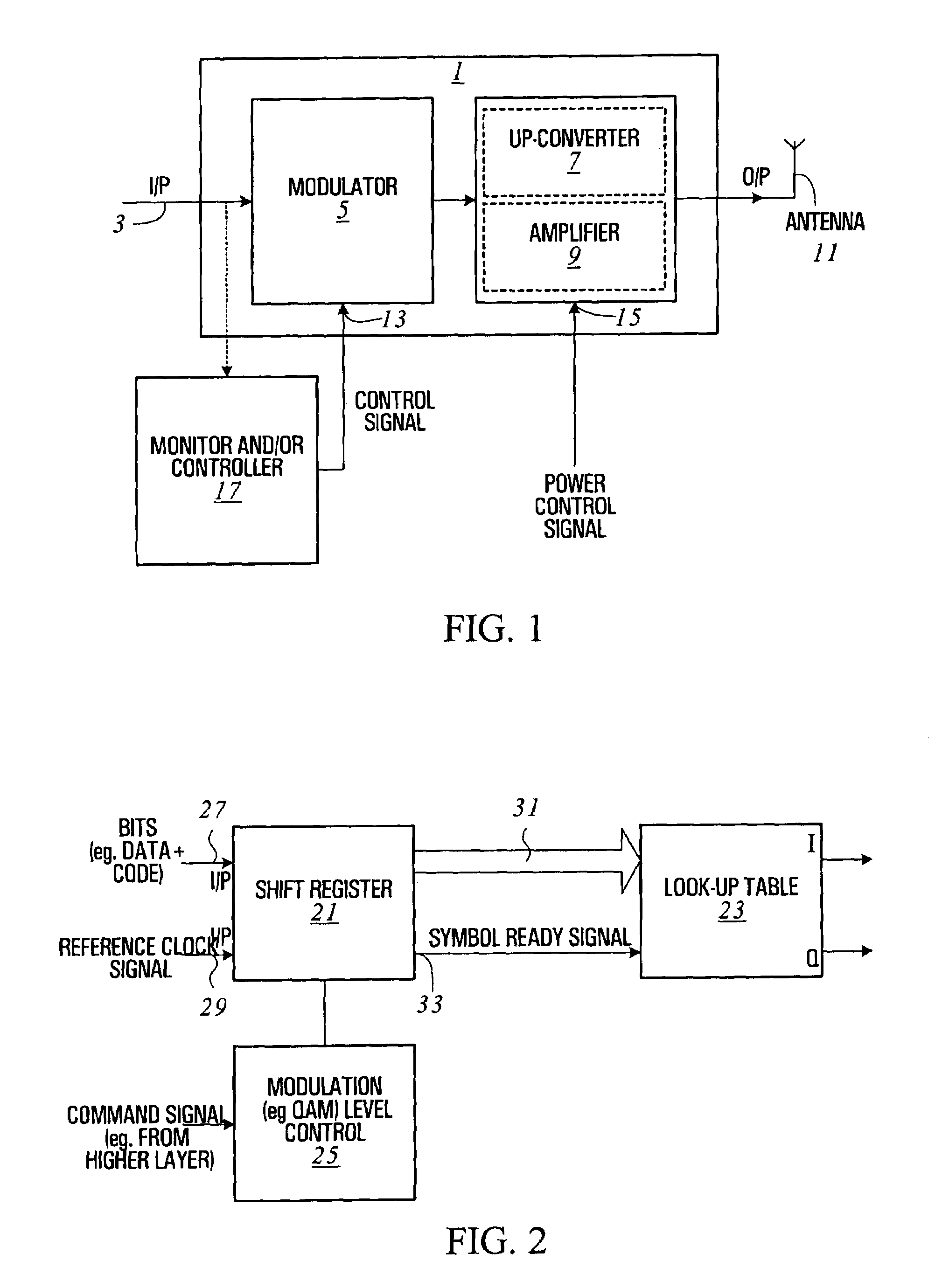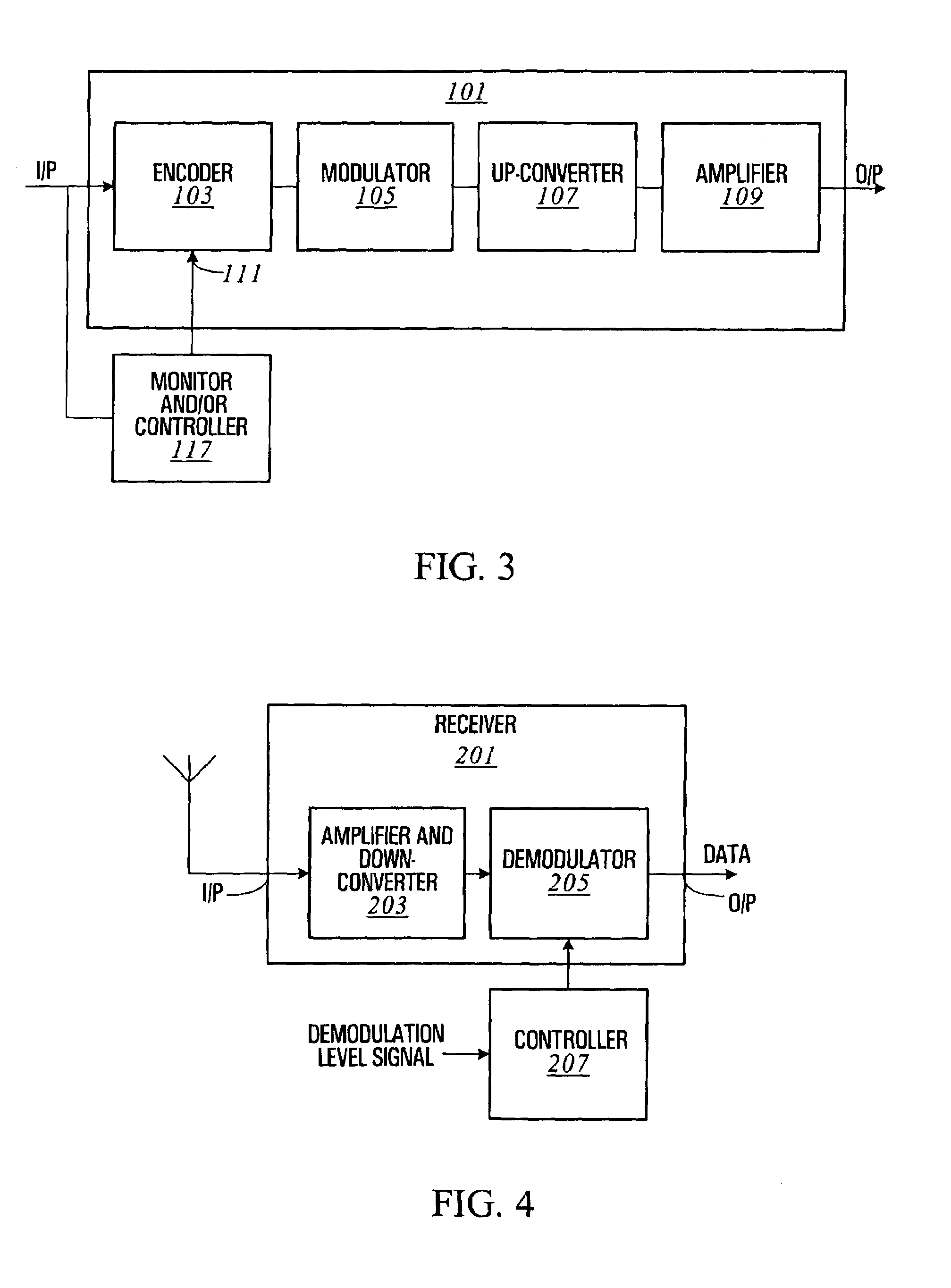Apparatus and method for controlling wireless communication signals
a wireless communication and antenna technology, applied in the direction of channel coding adaptation, transmission monitoring, multiple modulation transmitter/receiver arrangement, etc., can solve the problem of urgent search for a method for increasing the wireless link and its related network capacity, the concept of a “pico cell” (approximately 100 meters in radius) has failed in the deployment of the cellular system, etc., to reduce the power level of the wireless transmission channel and reduce the capacity of the wireless signal
- Summary
- Abstract
- Description
- Claims
- Application Information
AI Technical Summary
Benefits of technology
Problems solved by technology
Method used
Image
Examples
Embodiment Construction
[0058]FIG. 1 shows a wireless transmitter according to an embodiment of the present invention. The transmitter 1 has an input 3 for receiving data for transmission over a wireless communication link, a modulator 5 for generating a signal representative of the data, an up-converter 7 for up-converting the signal from the modulator to the desired frequency for RF transmission, and an amplifier 9 for amplifying the up-converted signal prior to transmission from an antenna 11. In this embodiment, the modulator 5 is capable of varying the data or bit carrying capacity of the wireless communication channel by varying the number of bits represented by each symbol or change of state in the output signal of the modulator. For example, a particular sequence of a given number of binary bits may be represented by a particular phase and / or amplitude of a signal, and the number of bits that can be represented by each or both of these parameters depends on the particular modulation scheme used. Th...
PUM
 Login to View More
Login to View More Abstract
Description
Claims
Application Information
 Login to View More
Login to View More - R&D
- Intellectual Property
- Life Sciences
- Materials
- Tech Scout
- Unparalleled Data Quality
- Higher Quality Content
- 60% Fewer Hallucinations
Browse by: Latest US Patents, China's latest patents, Technical Efficacy Thesaurus, Application Domain, Technology Topic, Popular Technical Reports.
© 2025 PatSnap. All rights reserved.Legal|Privacy policy|Modern Slavery Act Transparency Statement|Sitemap|About US| Contact US: help@patsnap.com



